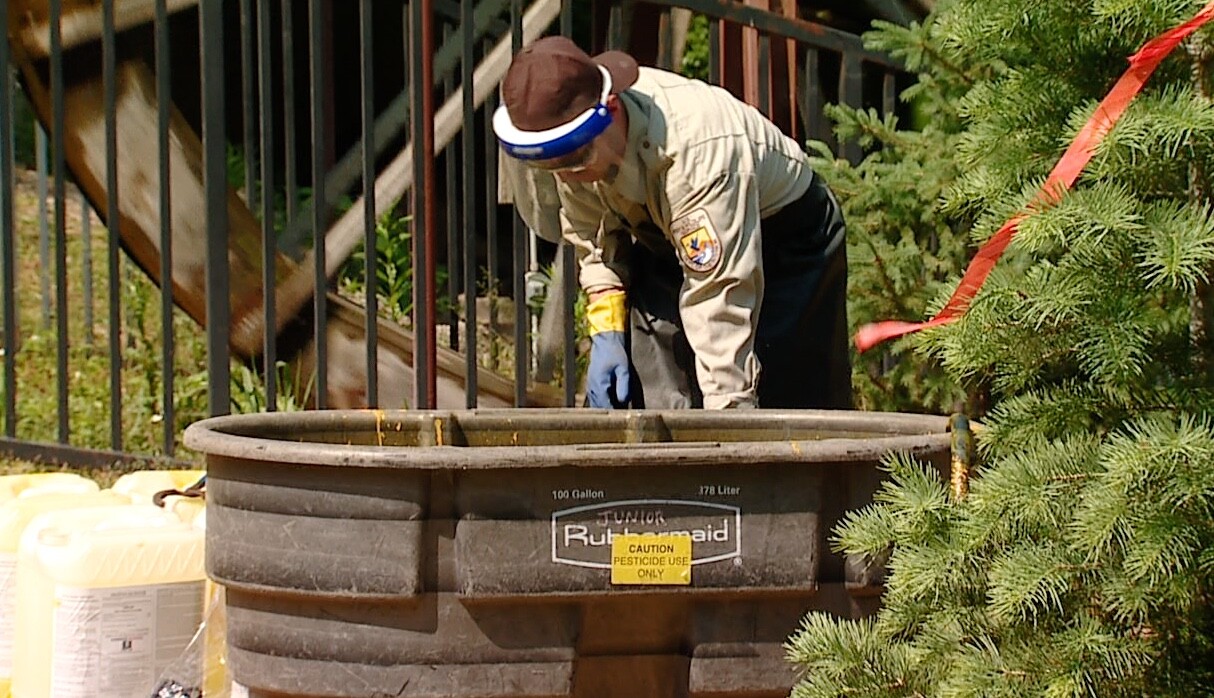GRAND RAPIDS, Mich. — Those looking to learn more about the Grand River and its watershed meandered through a series of displays on Saturday as part of the Grand River Adventure at the Grand Rapids Public Museum.
"Hopefully we inspired some kids to think about being a scientists someday," said Dr. Stephanie Ogren, the vice president of science and education at the museum. "There's always room for more knowledge and more questions."
The open house-style event let children and their families feel mussel shells and snakes, took them on a guided river walk, and offered a number of presentations.
"A day to get people excited about the Grand River" Ogren said.
In the spirit of such excitement, here are five things from the River Adventure that the Average Grand River Enjoyer may not know.
1. Two billion gallons
Every day, more 2,778,969,600 gallons of water flow from the Grand River into Lake Michigan, enough to fill the equivalent of 4,210 Olympic swimming pools.
2. Snuffbox mussel
An endangered species, the snuffbox mussel can live for up to 25 years in the Grand River. Its lifespan is linked to freshwater fishes as snuffbox mussel larvae — released from the female — attach themselves to the gills and bodies of passing fish so they can be spread around the river.
READ MORE: How GVSU and John Ball Zoo are protecting a 'Keystone Species' in the Grand River
3. Sea lamprey
Considered to be the "vampire" of the Great Lakes, sea lamprey are an invasive species that can kill up to 40 pounds of sport fish within a 12 to 18 month period, latching onto their prey with rows of razor sharp teeth. While lamprey live most of their adult lives in the Great Lakes, they spawn in smaller streams and rivers, including the Grand River.

READ MORE: Sea lamprey control efforts underway in West Michigan rivers
4. Lake sturgeon
For the past six years, the Grand Rapids Public Museum (GRPM) and its partners have surveyed portions of the Grand River for lake sturgeon, a prehistoric freshwater fish capable of growing up to seven feet long and living up to 150 years.

While lake sturgeon are rare, those still swimming are indicative of the river's health and potential to sustain a larger population.
READ MORE: Legend of the Great Lakes: GRPM searches Grand River for lake sturgeon
5. Riparian buffers
This term refers to the vegetation that grows alongside a body of water and the role it plays in protecting water quality
"They soak up storm water and prevent pollutants from getting into our river," said Ella Carr of Lower Grand River Organization of Watersheds. "The important thing is having some kind of vegetative buffer between the water and the land."
Building a riparian buffer with native plants can be simple," Carr said, and should be done out of care for one's watershed.
"The Grand River flows through where I live and flows into Lake Michigan where I love to swim, boat," she said. "We get our drinking water from Lake Michigan, so it's very important to protect that drinking water source."







